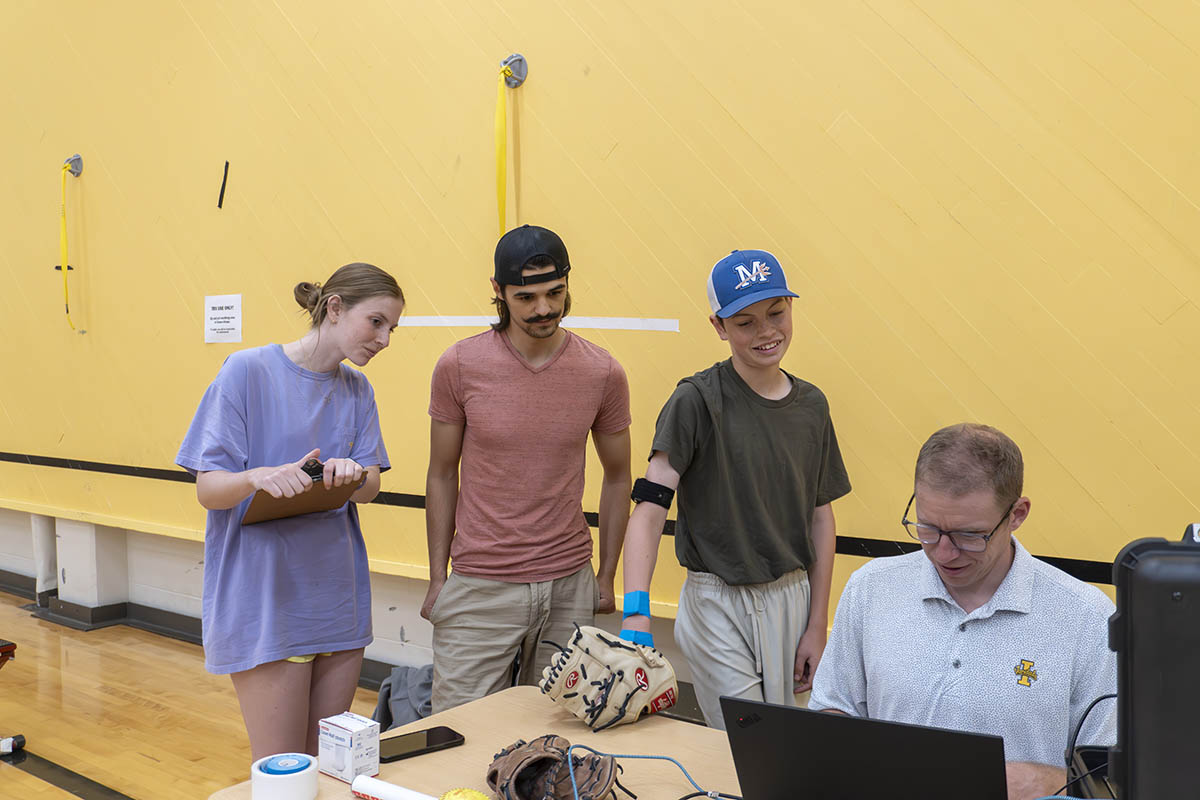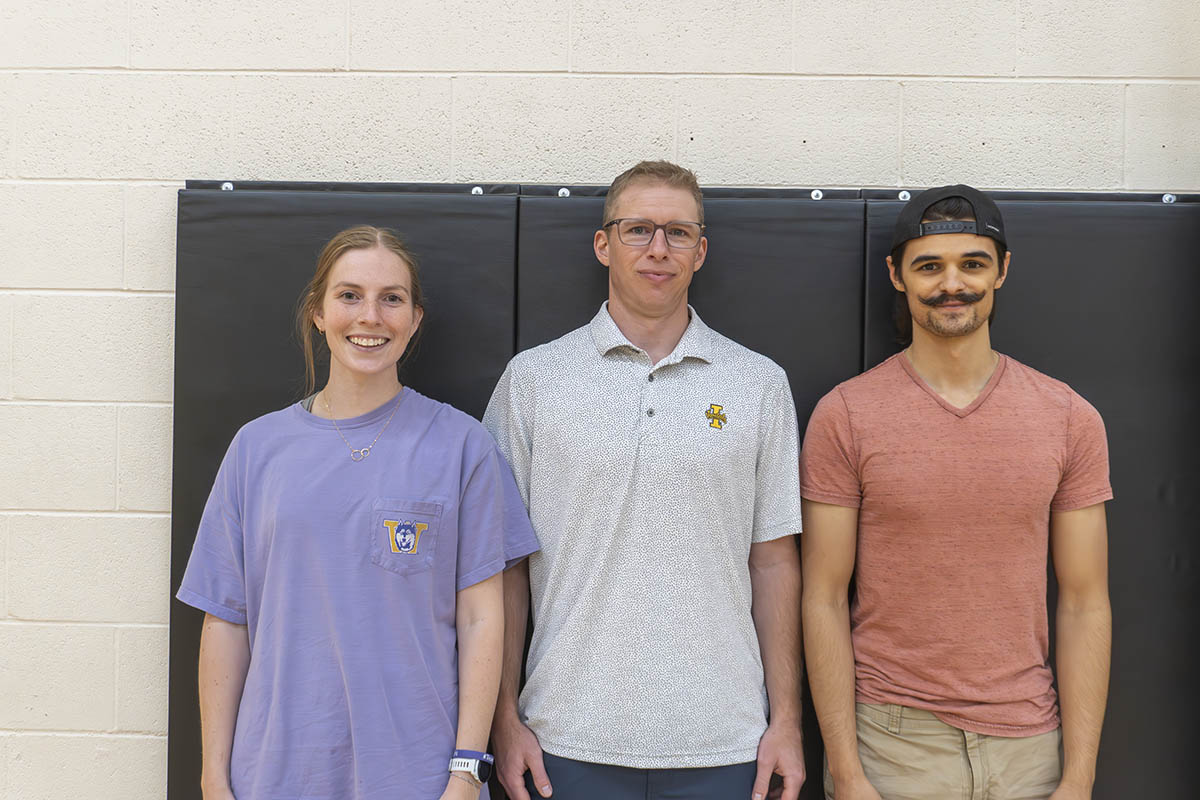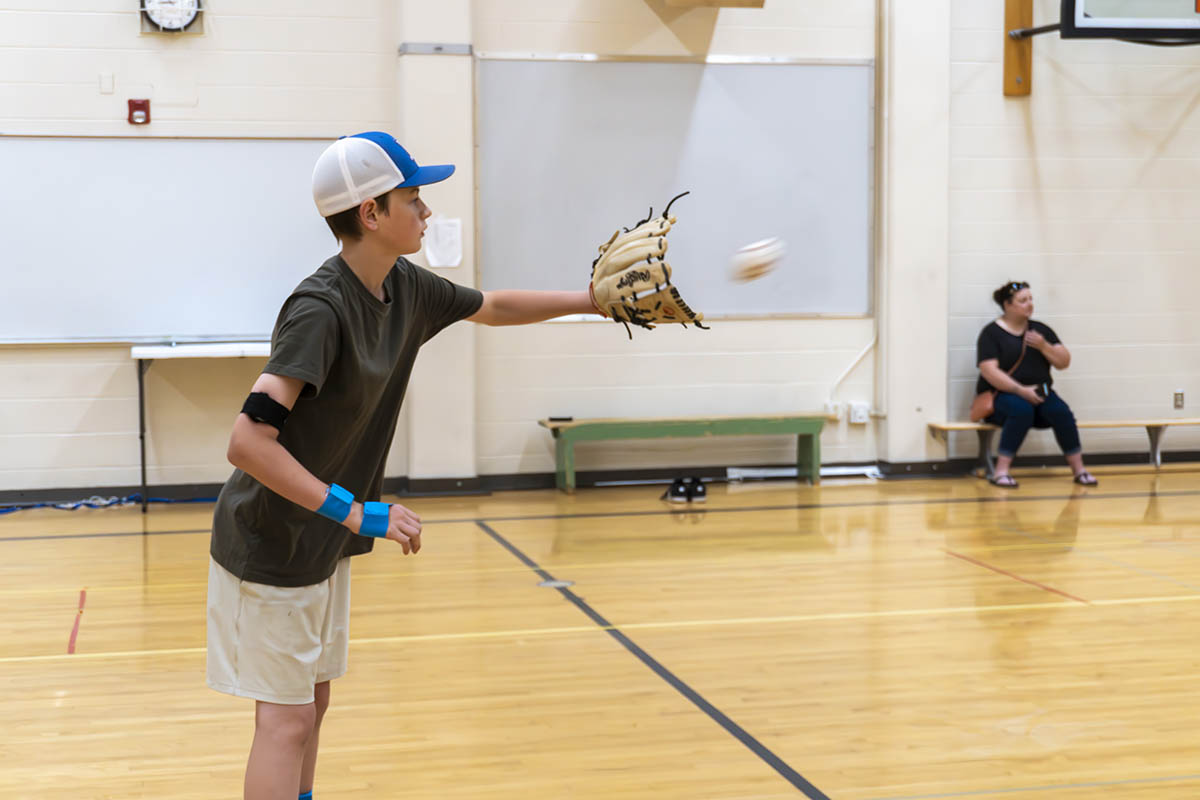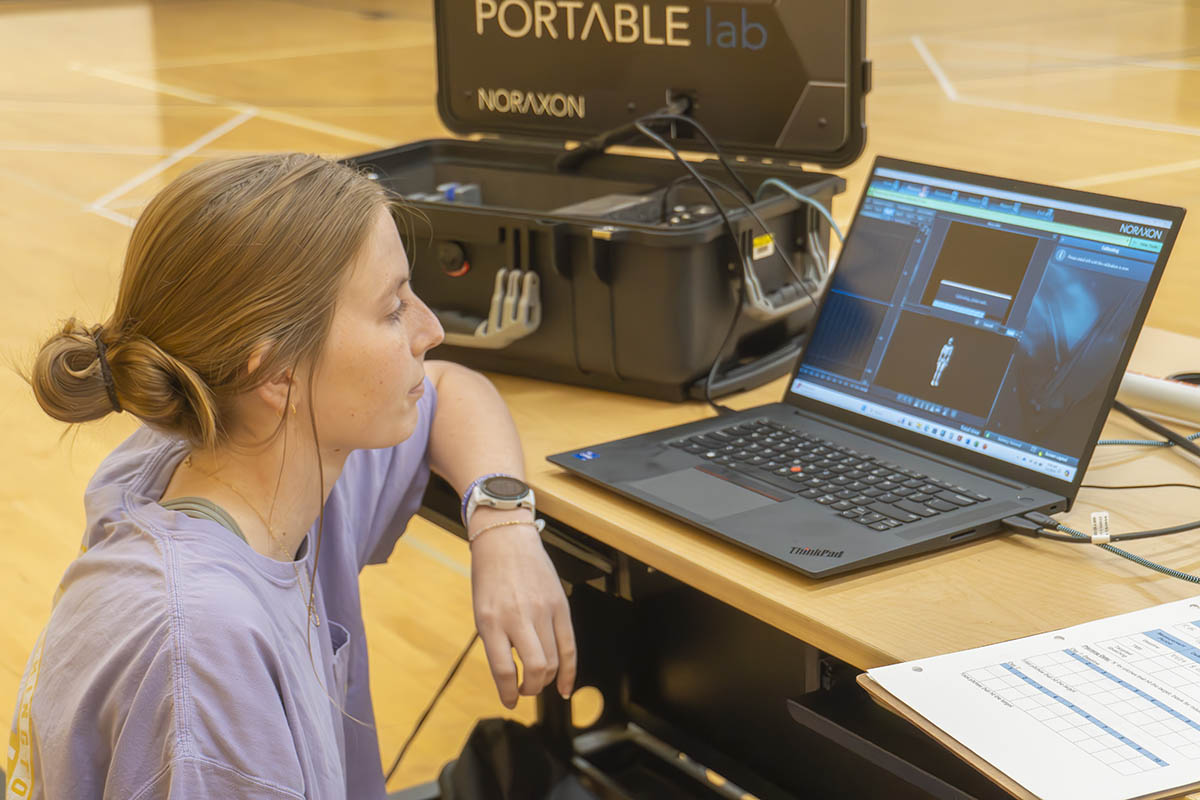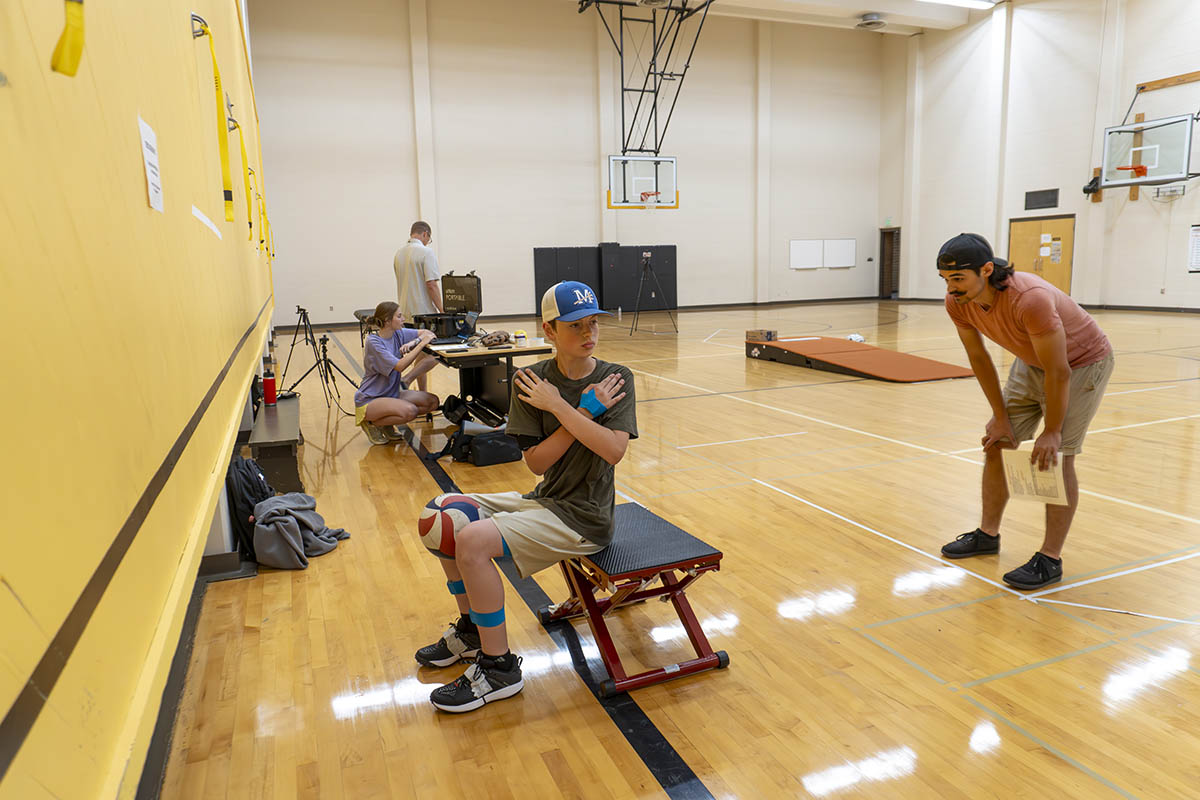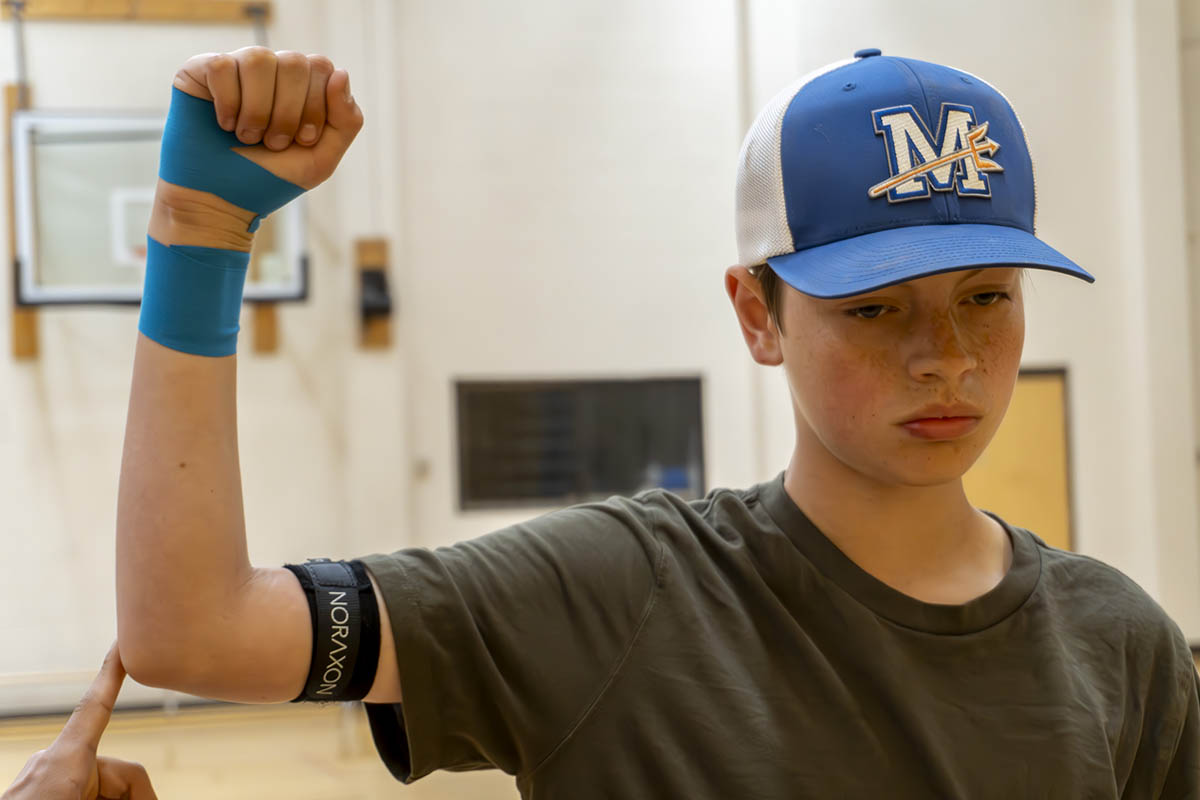Striking out injuries
Medical students study pitching improvements
Thwack.
The baseball landed with a thud into the 12-year-old boy’s glove.
Thwack.
He pitched it across the gym, landing it squarely in his partner’s glove.
“Okay,” he said. “I’m ready.”
The 12-year-old had signed up to be a participant in Idaho WWAMI Clinical Assistant Professor Nickolai Martonick’s pitching study.
“We are looking at youth pitchers, because in youth pitching, there hasn’t been a lot of research done,” Martonick said. “However, with the number of injuries happening with high school pitchers increasing, we wanted to step back and see whether there’s something happening when they’re younger, before they get there.”
With a specialization in athletic training and biomechanics, Martonick’s research focuses on understanding how single subject movement analyses can be used to better develop injury prevention programs.


Each young pitcher has sensors taped to their neck, hands, arms, legs and feet. These sensors are designed to track the movement of each extremity, reflecting that movement in real time through a 3D computer program.
We’re really trying to help pitchers within the community while providing a great opportunity for medical students. Nickolai Martonick, Idaho WWAMI clinical assistant professor
“What we want to do is see what range of motion the pitchers have, see if we can improve it and then whether it improved the pitching mechanics,” Martonick said.
Over the summer, Martonick opened his lab to WWAMI’s required summer research experience, inviting students from across the WWAMI region to work with him on his research.
Alyssa Randall and John Gregory, Alaska WWAMI first-year medical students, reached out to Martonick, interested in what he was doing in the lab.
Nickolai Martonick, PhD, LAT, ATC
Assistant Professor of Clinical Biomechanics
The pair spent the summer in Moscow, each of them taking on a specific portion of the project, with an overarching emphasis on pitching velocity and injury prevention.
“Overall, we’re looking at their speed, and then, theoretically, injury prevention, because it should lower the stress on the shoulder or elbow, if we can improve their range of motion,” Randall said.
Randall, who actually has been a pitcher her whole life, focused on whether changing the pitcher’s range of motion would affect their pitching velocity.
“I pitched in college and had three hip surgeries, from pitching from a super young age and only playing one sport,” she said. “But I saw the project and I was like, ‘Oh my god, I can help kids not end up like me. That would be so cool.’”
Gregory was studying if the implementation of a total motion release (TMR) focused stretching routine — a set of stretches designed to reduce pain and tightness in the muscle by exercising the opposite muscle — would change the active range of motion in the pitchers.
“We’re recording their motions. We use the sensors to see how far their range of motion is at the beginning of the study versus adding an intervention, the intervention being the TMR stretching routine,” Gregory said. “We’re going to compare that to a traditional stretching routine.”


The goal of the study is for pitchers to have an increased range of motion throughout the body.
Gregory said that, if effective, the TMR stretching routine could then be implemented into sports teams as something that could increase range of motion, prevent injuries and hopefully show an increase in ball velocity.
“What the research is already saying is that pitchers need to work on their range of motion,” Martonick said. “So, developing enough flexibility to perform the proper pitching mechanics.”
Another major element of the research is giving pitchers feedback on their pitching form and mechanics.
The lab analyzed the pitchers’ form based on a 12-point pitching inspection that identifies a loss of power and velocity or potential injury risk. Randall and Gregory assessed the pitchers, searching for possible improvements.
Randall explained that she would have loved an opportunity like this when she was younger.
“John and I look at 12 different parts of the pitch, to see if they have the correct fundamentals for that specific part of the pitch,” she said. “If they don’t, we write a little blurb on how they could improve. We attach a picture with lines and angles on it so they can see.”
Martonick said that the study, while an opportunity for medical students to gain some hands-on practice studying biomechanics and critiquing pitchers, is really geared toward helping the community.
“This is a research project, we have mechanics and other stuff we’re looking at, but the big thing is providing these pictures within the community,” Martonick said. “We’re really trying to help pitchers within the community while providing a great opportunity for medical students.”









